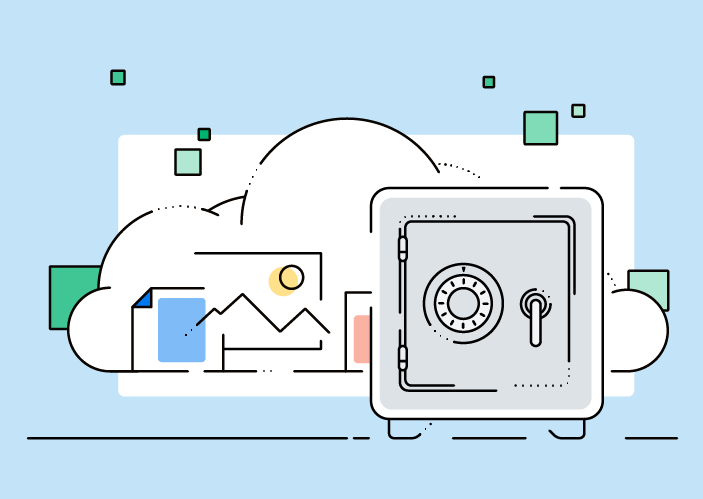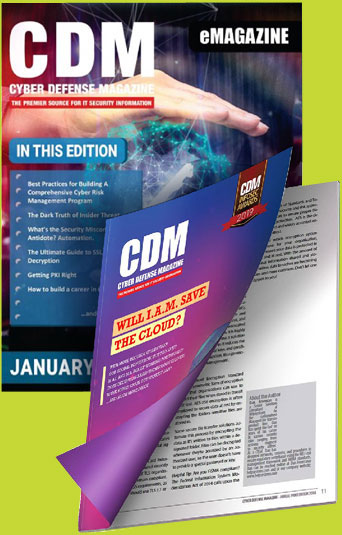by Johanna Reisacher, Marketing Manager, Secomba GmbH | Boxcryptor
Why Store Data in the Cloud, Anyway?
The times of a permanent lack of storage space and cumbersome sharing of photos with friends via USB stick are in the past. The cloud has long since established itself in our everyday lives. We store thousands of vacation pictures in our OneDrive account, work together with friends on documents stored in Google Drive, and already we take it for granted that we can access our important documents at any location on our smartphone.
Not to mention that we can now sleep more peacefully: As our data is slumbering in the cloud, we can be sure that personal documents and private pictures will not be lost, even if the hard drive is defective or a car drives over your laptop. The choice of using the cloud also offers a clear advantage over other storage options in terms of pricing, as most cloud providers come up with storage space free of charge or for a very small fee.
But Isn’t the Cloud a Quite Risky Place to Store My Sensitive Data?
This all sounds too good to be true if it were not for security. In fact, the cloud is not such a bad place to store important files. The data centers of major providers offer a level of security that private users, but also most companies, cannot guarantee. Or perhaps your laptop is guarded around the clock to prevent unauthorized access and downtime due to natural disasters? Cloud providers usually also store your data not only in a single data center but in several locations simultaneously.
The risk of an unauthorized person accessing your data increases considerably when files are not exclusively stored on a local drive. Unauthorized people could be hackers who maliciously attempt to access sensitive data but also employees of the cloud storage provider, who look at your data unwittingly or knowingly with bad intentions. Furthermore, for members of the government or law enforcement agencies, it is possible to access your data as well.
If it is important to you that your private data can only be accessed by yourself and by people you have explicitly authorized, you should worry about how to adequately protect your data.
How Can I Make Sure My Private Data is Protected From Prying Eyes?
When it comes to the protection of your data, in theory, most people are extremely motivated and willing to protect their privacy to the best they can. However, often there are deficits in the practical implementation.
What can I, myself, as the owner of the data do to additionally protect my data? One technique that is used repeatedly in this context is ‘end-to-end encryption’. Most cloud providers use encryption to protect the data on the path between the user’s device and the cloud, as well as in the data center.
However, the key to gaining insight into the data is most of the time kept by the storage service provider. Not with client-side end-to-end encryption: if client-side end-to-end encryption is used, the user selects the key with which the files are encrypted and does not give this key to anyone, including the cloud provider. The data is encrypted on the user’s smartphone, tablet, or laptop before the data is uploaded into the cloud. By doing this, unencrypted data that could be viewed in plain text will never reach the Internet.
Supplementary, the key to the data can be protected by a strong authentication measure. Two-factor authentication is recommended here. In addition to the login data, a second, external factor is used to prove ownership. Practically speaking, this means that in addition to entering the username and a password, a TAN which is sent to a cell phone via SMS, or the pressing of a security key is necessary.
How Do I Use End-to-End Encryption?
Some people are most certainly able to develop their own encryption algorithm to protect their sensitive data. Probably though most of us are thinking: it’s all well and good, but where can I get end-to-end encryption from? All those who are not cryptographic geniuses can breathe a sigh of relief.
There are software solutions that can perform exactly this secure encryption procedure for users. With an intuitive interface, the user can decide with just a few clicks which files or folders should be encrypted. The encryption of the data takes place in the background.
If the app is installed on every end device on which you want to access your files, you will always have your private files with you, encrypted and thus well protected from prying eyes. It is your choice which cloud provider you want to use to store your data. As the user and protector of your data, all you need to worry about is a strong password, ideally supplemented by two-factor authentication so that no one can find out the key to your data.
About the Author
Johanna Reisacher is a Marketing Manager at Boxcryptor | Secomba GmbH. After five years of working for an IT publishing house, she has joined the team of Secomba GmbH in March 2020. Since then, she has been working to bring the topic of data protection through end-to-end encryption closer to private users as well as companies.
Johanna can be reached online at https://www.linkedin.com/in/johanna-reisacher/ and at the Boxcryptor company website https://www.boxcryptor.com/.


